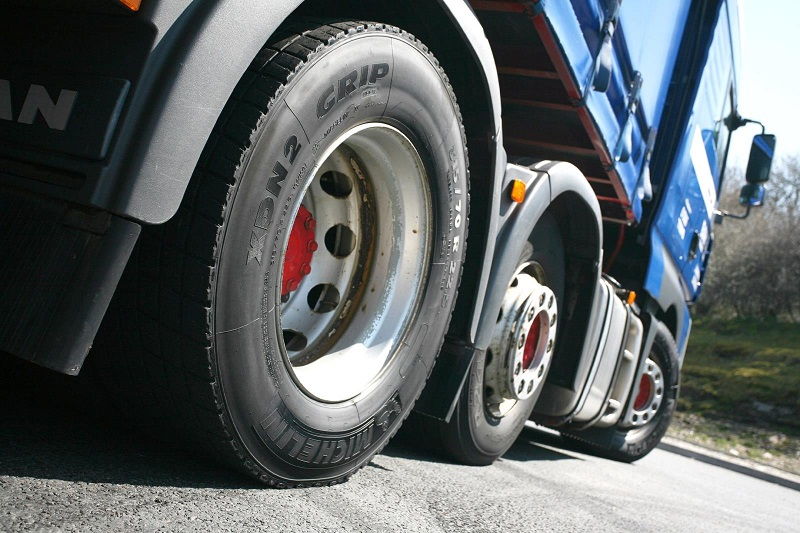An ecological effect of semi-truck tyres is an important subject that often goes overlooked in discussions about sustainability in the transportation industry. As one of the largest components of a large truck, tires play a critical role not just in security and performance but also in how effectively trucks manage fuel consumption and emissions on long-haul journeys. As increasing concern about global warming and eco-consciousness, understanding how to select, care for, and handle heavy-duty truck tires can contribute significantly to reducing a truck fleet's overall carbon footprint.
In this article will explore different facets of semi-truck tires, from selecting the right type for different routes and loads to recognizing the indicators that indicate it's time for a replacement. We will delve into the crucial factors such as tire pressure, seasonal choices, and maintenance practices that affect tire longevity and function. Furthermore, we will highlight sustainable tire options and innovations in tire technology that align with the increasing demand for more environmentally-friendly solutions in the trucking industry. Join us as we navigate through the complex relationship between semi-truck tires and their ecological impact, making sure that fleet managers and drivers are armed with the information they need to make informed decisions.
Selecting the Right Tyres for Your Semi-Truck
Choosing the appropriate tires for your semi-truck is essential for best performance and security on the highway. Various types of tyres serve various purposes, such as front tyres designed for handling and drive tyres designed for traction. It is important to assess the particular demands of your routes and cargo when making your choice. For instance, if you primarily operate on smooth roads, you might focus on economy. In contrast, if your paths involve challenging terrains, you will need tires that provide better long-lasting capability and traction.
Additionally, understanding weight ratings is crucial when selecting semi-truck tyres. Each tire has a particular load capacity, indicating how much load it can securely support. Ensuring that your tires match the load specifications not only improves security but also increases fuel efficiency and extends the life of your tires. Tyre pressure is another crucial element; keeping the correct inflation according to the manufacturer’s recommendations can substantially affect functionality and wear.
Finally, taking into consideration the weather conditions your semi-truck typically encounters can guide your tyre selection. All-season tires may suffice in moderate climates, whereas winter tires are greater suited for severe, cold weather. Some operations may gain advantage from green tyre options that not only reduce environmental impact but also provide better fuel efficiency. By carefully assessing pneu 11r24.5 , you can confirm that your tyres meet both your functional needs and support to better overall sustainability.
Tyre Maintenance and Lifespan
Proper maintenance is essential for enhancing the duration of heavy-duty tires. Frequently assessing tire pressure is critical, as both low pressure and high pressure can result in early wear. Keeping tires inflated to the proper PSI helps guarantee uniform wear and best fuel efficiency. Additionally, examining tires for signs of damage, such as slashes, punctures, or protrusions, should be part of regular maintenance to prevent failures and prolong tire longevity.
Tire rotation is another crucial practice that can considerably affect tire lifespan. While the exact frequency can vary based on usage, rotating tires helps to ensure uniform wear across each tires. This practice is especially important on semi-trucks, where drive and steering tires can degrade differently based on their location and function. Regular swaps coupled with alignment checks can produce a better balanced wear pattern and extended tires.
Embracing optimal strategies in tire maintenance goes beyond just pressure and rotation; balancing and alignment are further important factors. Irregular tire wear often signals misalignment, which can result in expensive replacements earlier than foreseen. Additionally, a properly balanced setup improves stability and performance, further protecting the condition of the tires. By staying vigilant about maintenance, truck drivers can not only reduce on replacement costs but also contribute to safeguarding driving conditions on the road.
Impact on the Environment and Upcoming Trends

The impact on the environment of semi-truck tires is substantial due to their importance in the transportation industry, which contributes to greenhouse gas emissions and resource consumption. Tires are made from a blend of natural and synthetic rubber, along with several chemicals and fillers. When tires are improperly disposed of, they can contribute to landfill waste and environmental damage. Additionally, the production of tires uses energy and natural resources, raising questions about eco-friendliness. Companies are now exploring sustainable tire solutions that minimize the environmental footprint while still meeting the operational needs of the trucking industry.
Future trends in the tire industry suggest a shift toward more green practices and advanced technology. Manufacturers are dedicating effort in research and development to produce tires that not only are more durable but also use more sustainable materials. Progress in smart tire technology, such as tire pressure monitoring systems and built-in sensors, aim to boost performance and safety while also enhancing fuel efficiency. These advancements are important for minimizing overall emissions from heavy-duty vehicles, aligning with global efforts to tackle climate change.
Fleet operators play a vital role in shaping the upcoming of semi-truck tires by adopting optimal strategies for tire maintenance and management. By focusing on managing the life cycle of tires, including adequate inflation, rotation, and on-time replacements, fleets can maximize their efficiency while minimizing environmental impacts. A combination of quality tire options, maintenance strategies, and sustainable choices will lead to a more green future for the trucking industry, benefiting both the financial sector and the natural world.
